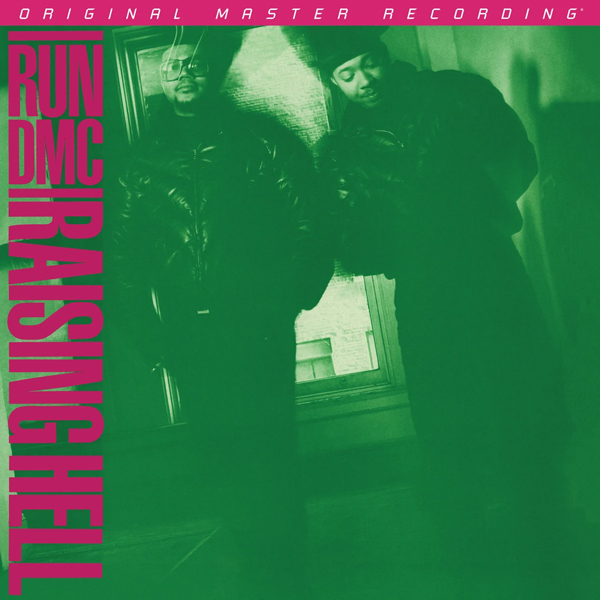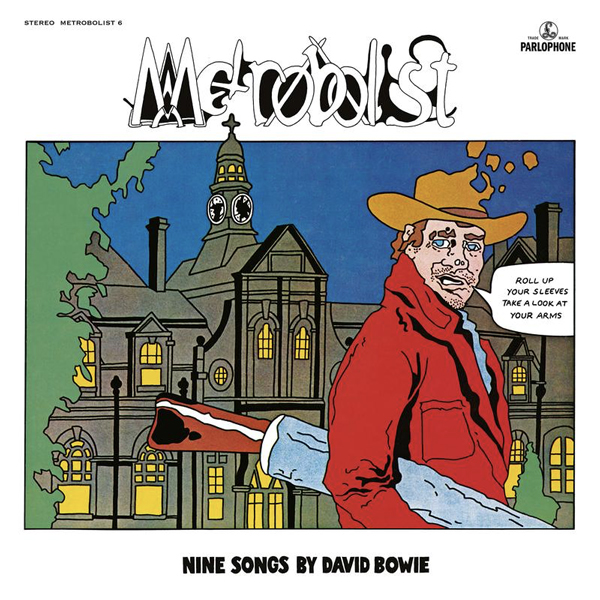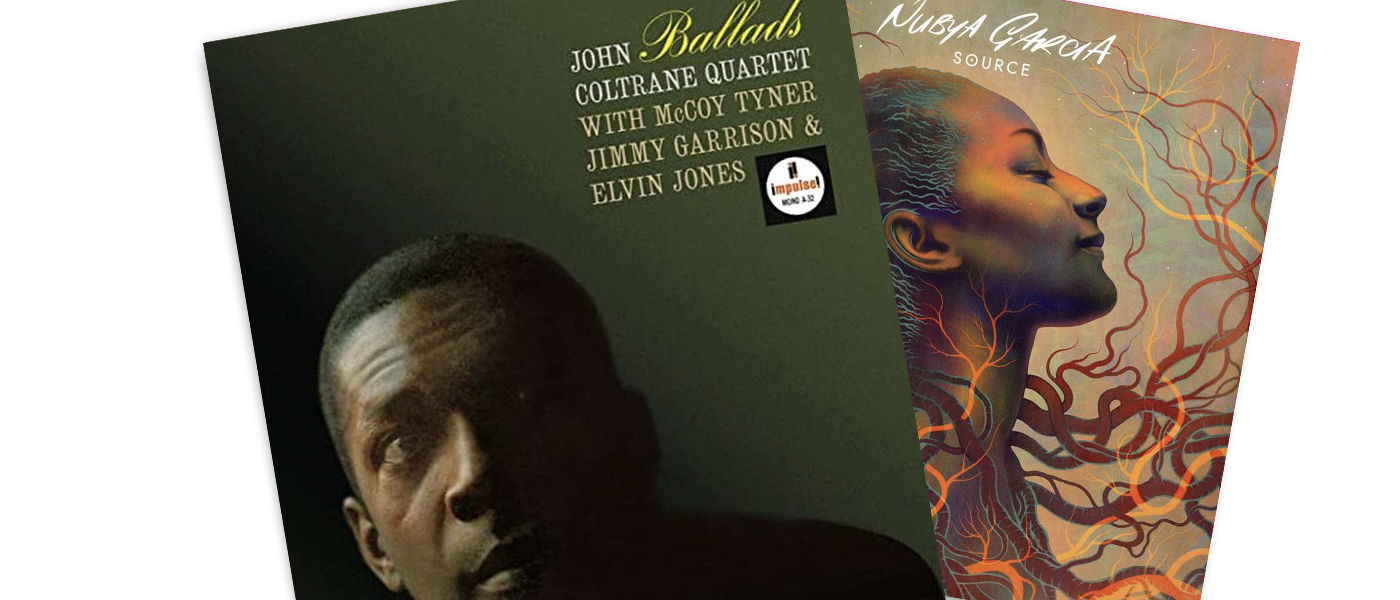
Some people are born into professions. Some are born into money. Some are born to run, and some are born to be wild. I was born into Tom Petty fandom. Any sign of resistance or dissension would have been summarily squashed by my fanatic first cousin. She gifted me an original pressing of Long After Dark for my seventh birthday, and that, as they say, was that. I caught him live with the Heartbreakers a few times and Mudcrutch once (at the Fillmore with that same cousin). Saw some of my greatest live music moments ever and was left wanting more. For the last 20 years, I’ve mistakenly believed that Echo was the jewel in the Good To Be King’s crown. Now, I know it is Wildflowers. It’s always been Wildflowers. This is the way.
I was mired in research as the release date for Wildflowers, and All the Rest neared. Wild-haired and Google-eyed. With fingers hovering above the keyboard, I studied. I needed to know which to get. Surely the 3LP version would cut it. Right? But maybe I should go with the 7LP set for extended coverage just in case. Who could possibly need the 9LP behemoth? (Me.) How much use would any listener actually get out of 18 sides of vinyl devoted to a single album? (A frigging lot.)
Here’s the deal: the triple vinyl version gives you the original Wildflowers release along with additional tunes that didn’t make the final cut (and that happen to be some of Petty’s strongest songs ever). The 7LP version gives you those plus home demos and live performances. (The demos reveal Petty’s talents as a multi-instrumentalist and superior singer of harmonious melodies and are stronger than 99 percent of anything that’s been on the radio since 1979. The live tracks are documents of the Heartbreakers performing in concert. Enough said.) And a book. The 9LP monstrosity adds a set of alternate versions (Finding Wildflowers) to the pile. And a hardcover book. As whacky as it seems, that damn hardcover pushed me over the 9LP cliff.
And I’m still freefalling. I’m never coming back. Wildflowers and All the Rest is damn-near perfect in every way. I snapped up the 2009 Wildflowers reissue immediately upon release. Kevin Gray lacquered that one, but it was mastered, for reasons that remain obscure and obscene, from digital files. I enjoyed listening to it, on occasion. It sounded thin and tentative, which is how I was fooled into believing that Echo was the King. But this latest version opens things up considerably, and we’ll never get the genie back in the bottle now. No, the genie is stomping through LA smoking a joint the size of a hog’s leg as we speak. Singing songs about honey bees and broken hearts. Crawling back to cabins, houses in the woods, and higher places. No, he ain’t getting back in that dusty bottle, you can forget it.
This is the set to have. The book contains multiple essays and anecdotes from journalists and Petty’s musical conspirators, as well as song-by-song analyses and notes. And lyrics. And original art. The original Wildflowers album was cut from half-inch tape, while most of the other material was either recorded digitally to start with (home demos and some live material) or were transferred to ProTools, then converted back to analog at Chris Bellman’s studio for sweetening, then re-digitized so that all the resolutions matched. The set was pressed at Record Industry, and my set is borderline perfect. No repeatable ticks or pops throughout the entire run.
Wildflowers and All the Rest feels like having a Ph.D. in Tom Petty. And it feels like Tom Petty has broken the fourth wall and is singing directly to you. The sonics are that clear. You might be able to skate by with the 5LP set because the alternate takes are the least essential aspect of the larger release. But go no lower. The 3LP set would leave you wanting. If you have the budget for it, the 9LP set is an immersive experience that will reward a lifetime of focused listening. And it makes me miss Tom Petty. I wonder if he’d have ever topped this…

My youth could be bisected into two unequal parts: the time before Run-DMC’s Raising Hell and everything after. Before, I was moonwalking across all available surfaces, wearing a single shiny glove, and wishing that my genetic disposition were more conducive to rocking a Jheri curl. After Raising Hell landed, there were fat laces (I just couldn’t keep my shoes on with no laces at all), Kangols, and buzz cuts. Jheri curls be damned. My copy was on a cassette. It was the purple and green variant, and it traveled with me back and forth from Georgia to Tennessee while splitting time (also unequally) between my mom and my dad’s. They were not impressed. But to this day, it’s one of my favorite albums of all time, and not due to nostalgia. Not even close.
Mobile Fidelity announced their intention to reissue Raising Hell what seems like 20 years ago. It was at least two years ago, easy. Maybe. Anyway, I waited a long time. And now I only have to wait until I get home from work so that I can blast it again. Then, again. It’s not easy, but I make it happen. I’m a grinder. The album has been reissued a million times, including once last year by Vinyl Me, Please. That version is highly regarded. I’ve not heard it, but it’s tougher than leather to imagine any version surpassing MoFi’s for sonics, clarity, presence, and life. I mean, damn. This has to be the definitive version. It was pressed perfectly by RTI on two 180-gram discs cut at 45 rpm for wider grooves and enhanced detail. It’s as heavy as the content dictates it be. This is an adult portion.
Secrets Sponsor
From a historical perspective, this album’s importance to popular music can’t be overstated. It wasn’t the first Hip-Hop work to cross over, but it blasted the door that Kurtis Blow, Grandmaster Flash, and Africa Bambatha had cracked open off its hinges. It was the first Hip-Hop record to earn a platinum rating and landed Run, DMC, and Jam Master Jay on the cover of Rolling Stone magazine. It resurrected Aerosmith’s dormant career, and their comeback material would serve as the template for innumerable crappy radio songs and production techniques for the next couple of decades. It released the Kraken.
Rick Rubin (also responsible for producing Wildflowers, as incongruent as that may seem) and Russell Simmons share production credits, but the word is that the trio had Raising Hell dialed in and ready to record way prior to actually doing it. They’d written and rehearsed the material on the road after touring in support of their King of Rock record (Hip-Hop’s first gold certification) and completed Raising Hell start to finish in less than three months. If I were to wade into the waters of speculation and overreach, I’d guess that Rubin’s contributions were more as a “reducer” than a “producer.” (He was credited as such on LL Cool J’s first album, Radio.) His production of the era was famously spare, and it never covered any group’s needs as thoroughly as Run-DMC’s. Get out of the way, and let the men rhyme. And cut and scratch.
Most of the action on the MoFi reissue is in the center of the soundstage. Run ever so slightly to the left, and DMC on the right. Beats dead center with accents (guitars, bells..) further afield on either side. The bass will make you cough, and the clarity of the voices makes deciphering the lyrics (all of which I’ve retained in my mind after all this time) that much easier. But it’s 2021, so any good news will be tempered with some bad: MoFi pressed 3,000 of these, and they sold out during pre-order. The aftermarket is the only way to go, and I’d recommend going now because the current $150 average asking price will be a memory soon. People will get $300 all day. Such are the times. And this release would almost be worth it.

It’s been a second since we’ve checked in on the goings-on at Vinyl Me, Please. I joined that club in the first half of last year, and I went gonzo collecting current titles and others that were out of print. It took me a second to get the lay of the land. The company is (mostly) forthcoming about their sources and the pressing plants they use. Some of their titles are exclusive to VMP, while others are just colored variants of widely available titles. (I’ll live a thousand years before I understand the obsession with colored wax but to each their own.) Some are AAA productions, most aren’t. Shipping sometimes takes months, literally. There are often production delays. I’ve gotten more than a few defective pressings, and customer service has always made it right. Eventually, the experience has not been without its frustrations, and my membership has also allowed me access to some of my favorite vinyl releases. But what really sets VMP off is their curation. I’ve purchased and loved multiple records that I might otherwise have never encountered. Specialist In All Styles by Orchestra Baobab is just such a thing. Golly, it’s great.
These specialists saw their greatest success during the 1970s in Africa. They are a Senegalese outfit with eleven members credited along with three guests (including Youssou N’Dour and Ibrahim Ferrer, the latter of Buena Vista Social Club fame). Vocals, guitars, bass, drums, and a billion percussion instruments. Specialist was originally released in 2002 during an era when the band had recently been reunited. This is the album’s first-ever vinyl release, and this is an example of VMP pressing a colored variant (light blue) to coincide with a wider standard release. All that to say that you can still find a copy even if it’s not blue. The songs are re-recordings of some of the band’s earlier hits. (This seems a little hokey, perhaps, but I’d have given a kidney to hear Springsteen re-do some of his earlier stuff with the E Street Band’s classic line-up. Sadly, this is no longer possible.)
If you’re a Buena Vista Social Club fan, then this one’s a no-brainer for you. It is in the same Afro-Cuban vein, and it projects a similar sonic vision. This is good time music for hard-luck people. A musical escape to a softly lit outdoor dance floor where everyone sweats and drinks, and moves together. Cigars are involved. Some rum, perhaps. Certainly some mystery and intrigue, and always some heat.
The production achieves great detail and above-average transparency. The sax blasts during “Bul Ma Miin” stop just short of your face. The dialogue between the reeds at the end of “Sutukun” are more lifelike and immediate. (Perhaps these recordings were from separate studios? Specialist was made mostly in London, but also in Dakar and Paris.) It would not seem strange to hear David Hidalgo or Cesar Rojas singing over “Jiin Ma Jiin Ma.” I’m not educated enough to square the Latin flavors with the band’s cultural history, but it works all the way through. There are no weak songs, and the first instinct upon completing a listen is to just do it again. From a pressing standpoint, this is an example of GZ’s stronger work. If you’re looking for something off the beaten path, Specialist In All Styles, specifically, and VMP, in general, might do it for you.

I’ve never paid a ton of attention to “Glam Rock,” I don’t guess. When I think of the term, I think most acts like Mott the Hoople and Slade, and I don’t know much about either except that I really loved that “Run Runaway” song when I was a kid devouring as much MTV as daylight would allow. But even I know that there were two acts atop that glittery heap and that they were David Bowie and T. Rex. The former artist obviously transcended the genre and ultimately life, in general. He was clearly so much more than a Rock ’n Roller, let alone a Glam Rocker. That leaves Marc Bolan as the last glam standing in my mind. We’ll check out a recent re-issue from each artist this month, starting with MoFi’s take on T. Rex’s classic Electric Warrior.
And let’s get this out of the way from the start, shall we? The term “Glam Rock” is overtly frivolous. Which matches the aesthetic of the movement itself. The heyday predates the author’s birth, but not by much. There were remnants available for exploration in real-time (if KISS counts) as well as mutations (close your eyes and pull any Hair Metal band’s name from the bejeweled top-hat). The whole thing was allegedly kicked off by a televised T. Rex performance on Top of the Pops during which Bolan wore glitter on his face and satin on his legs. For many, the term is considered derisive, an expression of scorn indicating a watered-down and twiggy branch of a more firmly rooted tree. “Glam” points more towards a band’s appearance than their sound. For me, it all goes in the same pot: good music versus bad. Electric Warrior is mostly good. Alright. Moving right along…
Secrets Sponsor
Looking at the iconic cover, it’s hard to imagine that T. Rex was considered a bubblegum pop band. It looks dangerous. It looks loud. And to a small child visiting the independent record store next to the barbershop where his dad got his ears lowered in east Tennessee, it looked like a magnet. But a closer inspection reveals what some detractors might think of as Glam’s handicaps. A song like “Cosmic Dancer,” for example, might not have even made it as an outtake. It doesn’t really go anywhere, it’s structurally flimsy, and it substitutes novel sounds and production techniques (backward guitar solos might have still sounded edgy in 1971) for skilled songwriting. It’s also groovy, baby, and ten tons of fun to hear. If you’re not moved to bang a gong during “Get It On,” then you’ll never be moved. That song’s formula worked so well that the band used it again for “The Motivator.” Three songs later. Throughout Warrior, the barroom sing-along choruses and handclaps bear the listener along on fuzzy clouds of Marshall stack goodness, and then… it’s gone. Forty minutes of mindless good times, and you’re ready to face whatever dismal reports the news may offer. In 2021, it’s less like a childish detour and more like an exercise in self-care.
I have no original for comparison, but MoFi’s version, cut at 45 rpm and spread out over two heavy discs, sounds airy on top with a bit of sibilance. This is probably endemic to the master tapes, and surgical intervention would likely be fatal to the organism. The records themselves are flawless. The initial run sold out instantly, but a repress is underway. For those of us who are prone to shiny objects and good times with guitars, this one’s a must.

Alright. So some folks might argue that Glam Rock was born in March of 1971 during the T. Rex performance on Top of the Pops. Others would say it occurred on January 8, 1947, when David Robert Jones came into this world. He’d call himself “Bowie” later, and he didn’t just bring Glam Rock with him. He brought relentless originality and a refusal to live according to anyone else’s code. He also brought style and decadence. He taught us to live and let live, and he brought a stage show that nearly blew my fifteen-year-old brain out of my ears when I caught his Sound and Vision Tour in Atlanta on Monday, May 7, 1990, at eight of the clock. At night.
His third studio release, The Man Who Sold the World, was reissued with its original artwork and title restored. “Henceforth, we shall refer to it by its given name… Metrobolist.” Whatever that means. The album itself meant plenty. It was a departure from Bowie’s folksier sound that he’d enjoyed some success with after releasing “Space Oddity” on his (second consecutive) self-titled long-player. That shine had already faded by the time TMWSTW came along, and Bowie was in danger of slipping back into obscurity. Seems ridiculous now, but that was the score in 1971.
And by “departure from his folksier sound,” I mean that the dude came charging out of the gate with “The Width of a Circle” sounding like Black Sabbath. Seriously, the word “glam” (if we are to consider it an actual word) would not have been attached to any part of Metrobolist based on sound alone. That came when Bowie balked at the cartoonish artwork that he’d commissioned Michael J. Weller to create and lobbied for a change of venue to a Haddon Hall living room where he could recline on a chaise longue in a dress. His UK label took the bait, but us Americans couldn’t hack it. We ran with the cartoon, and we deleted the text bubble’s content (which we now know to have read “roll up your sleeves take a look at your arms”) so that the character said exactly nothing. Makes sense, right?
The 2020 version is a complete remix that was undertaken by the original producer, Tony Visconti. This is not a remaster designed to mimic, but improve upon, the original. Again, I have no first pressing for comparison, but others have suggested that the acoustic guitars are pushed more towards the front of the mix amongst other more radical adjustments. I can say with certainty that the sonics are overly bright in places, but not necessarily due exclusively to production techniques. The drumming on the album opener is cymbal-heavy, and that effect combines with the frantic strumming of acoustic guitars to create a tinny, yet somehow still muddy, sound bath that is a bit fatiguing to the ears. The cymbals drop out during a transition between “movements” (the song is over eight minutes long), and it’s almost like closing a window when an ambulance is passing. It feels restful. The rest of the work is more balanced and easier to digest. The top-end remains prominent but less intrusive.
Metrobolist stands on its own as one of the more wicked Heavy Metal albums of its era or as a fascinating outlier in comparison to Bowie’s other works. He would never sit still for long, and thank goodness. Optimal did a great job with the pressing, and the gatefold cover creates room for that androgynous photoshoot to be included too. This was not a limited release and should be available for a while. I’d grab one now, though, and enjoy the ch-ch-ch-changes.



